




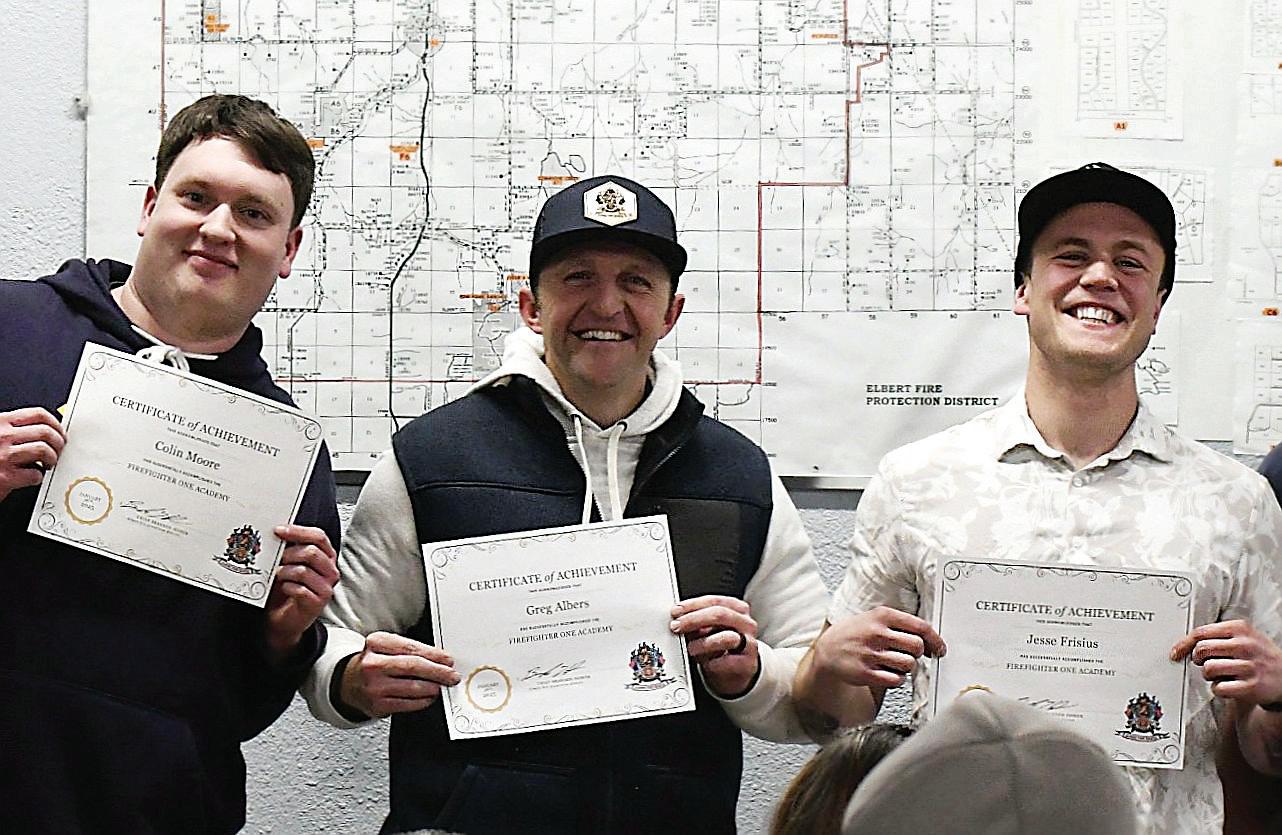









BY NICKY QUINBY
e Elbert Fire Protection District took time recently to celebrate their accomplishments from the past year and to recognize several notable achievements. According to EFPD, in 2024 the district responded to 186 calls and volunteer members contributed 8,797.25 hours of available time. EFPD only has four part-time sta covering the station and running medical calls Monday through Saturday, with around two dozen volunteers making up the bulk of the
department’s roster.
At the Jan. 18 event, the EFPD board — Board Chair Jay Walp, Rich Barclay, Scott Field, John omas and Vince Pemberton — presented Chief Brandon Homer with the Fire Department Lifetime Member Medal of Honor for “demonstrating exceptional dedication, bravery, and sacri ce during his service as a re ghter.” Lifetime members are selected based on their “distinguished years of service, outstanding leadership, training, mentoring and a consistent record of heroic actions in the
face of danger.”
e board of directors recognized Chief Homer’s 33 years of service and dedication to the district. “He tirelessly worked his way up through the ranks to become re chief in 2015. Despite challenging nancial times, Chief Homer found innovative ways to acquire funding to upgrade his personnel’s equipment, increasing their safety and e ectiveness,” said Director omas.
“... Chief Homer vastly improved the district’s capabilities and infrastructure by coordinating the nancing and purchase of one engine, two tenders, an ambulance and a brush truck. He also oversaw the acquisition of new land and the construc-
tion and operation of two new re stations thereby greatly enhancing their ability to provide more e cient life and property protection services to the entire district … Chief Homer’s outstanding service and leadership to date is inspirational and is in keeping with the highest traditions of the re services profession,” omas added. e increased property protection also lowered residential homeowner’s insurance premiums.
Board Chair Walp also had positive things to say about Homer’s tenure. “... e department would not be where it is today without the hard work and dedication of Chief Homer.
Dougco Schools add to career education with funding from bond
BY MCKENNA HARFORD MHARFORD@COLORADOCOMMUNITYMEDIA.COM
With the voter approval of a $490 million bond, Douglas County School District is expanding its career and technical education programming to meet the growing demand from students.
e November 2024 bond dedicates $32.8 million to investing in career and technical education (CTE) in the school district. District o cials shared the plans for adding opportunities for students at the Feb. 11 school board meeting.
Many of the additional classes will be o ered at the Legacy Campus in Lone Tree, which is the central location for the district’s CTE programs. Upcoming opportunities at Legacy include classes on electric vehicle and automotive technology, advanced manufacturing, construction and electrical work.
Outside of the Legacy Campus, the district will also o er cosmetology at Douglas County High School in Castle Rock and automotive technology at Highlands Ranch High School, expanding two popular class options to new schools.
Student participation in the district’s career and technical education programming has signi cantly increased from last year. is year, approximately 25,500 students are enrolled in the district’s 75 CTE programs.
“Whether their next step is college, the military, vocational training or directly entering the workforce, we aim to serve as a student launchpad,” Rex Corr, principal of the Legacy Campus, said.
Most get no knowledge about taxes, savings, loans or investments
BY JENNY BRUNDIN, LUCAS BRADY WOODS AND JESSE PAUL COLORADO CAPITOL NEWS ALLIANCE
When state Rep. Anthony Hartsook was a commander in the U.S. Army, he’d see soldiers try to explain why their checks bounced at the PX or Army store.
“ ey go, ‘Well, I have a credit card, right? I have checks in my checkbook’ … ey just simply didn’t understand.”
Hartsook would order the soldier to attend a nancial literacy class.
“ ey would come back and go, ‘ at class was great.’ ey learned things they simply hadn’t any experience before in life … how to deal with the expenses of living, buying a car … they understood the basics of nances that would set them up for success in the future.”
e Douglas County Republican was surprised to learn that nancial literacy is not a required course in Colorado schools. at’s when he signed on as a sponsor to a bipartisan bill to require all students to take a one-semester course in nancial literacy in order to graduate.
Right now, most Colorado students go out into the world with no knowledge about taxes, savings, loans or investments. Bill sponsors said just 13 percent of students are guaranteed access to a personal nance course before graduation. And today’s students are more vulnerable than ever to online gambling, cryptocurrency schemes and other get-rich-quick apps online, they say.
Colorado’s largest district, Denver Public Schools, adopted nancial literacy as a graduation requirement starting with the class of 2027 after a group of DPS alumni advocated for it.



Still, just a quarter of districts require personal nance to graduate Colorado has nancial literacy standards, which were updated in 2021.
ey include topics like saving, investing, debt, credit, leasing versus buying, insurance premiums, managing student loan debt, and retirement plans. While the state board strongly encourages local school districts to require personal nance courses, only about a quarter of the state’s 178 districts include personal nance as a requirement to graduate.
“Encouraging just simply hasn’t been getting the job done,” said Hartsook. “We have red and blue states across the country that have found this to be very successful. We need kids to graduate to enter the workforce who understand nancial literacy, balance sheets, credit cards, their banks, … and just having it as a recommendation simply isn’t achieving enough of what we need to do.”
e bill would also make lling out a federal or state nancial aid form, the CAFSA or FAFSA, a condition for graduation. It would, however, allow students to opt-out. Colorado ranks 46th in FAFSA completion. About 37 percent of high school seniors completed the FAFSA last year, well below the national average. State o cials say Coloradans are leaving an estimated $30 million on the table in unclaimed aid each year.
“A lot of low-income families qualify for free aid, and they just don’t know and they haven’t lled out these forms,” said Yanely Espinal, an advocate at NGPF Mission 2030 Fund, a non-pro t organization that has lobbied to get similar bills passed and other states and is a liated with Next Gen
Personal Finance. “ e goal is to increase access to free aid for those who qualify and (access) to low interest rate loans so that students aren’t riddled with private student debt.”
One study shows a lifetime positive bene t of $116,000 per student in Colorado when they take a semester personalnance course before graduation. Bill backers also point to other studies showingnancial education’s impact on a number of factors from frequency of payday borrowing to retirement savings.
Currently, 26 states require students to take a personal nance course in order to graduate from high school. A handful of other states require nancial literacy coursework to be integrated into other subjects.
Utah was the rst state to adopt a nancial literacy requirement during the Great Recession. A 10-year study of the e ort shows, “when you get, that every single student has access to this course and they have better savings rates, they make better choices about borrowing if and when they do borrow,” said Espinal.
In particular, studies show rst-generation students make much smarter decisions in terms of the interest rates they get for loans and have better credit scores in the future. ey are able to compare nancial services better and have money in savings accounts that yield higher rates, she said.
“ at’s just not true for students who don’t know any better, who’ve never been taught that, and they don’t understand the di erence between those interest rates private versus federal,” said Espinal. “ ey don’t understand unsubsidized loans versus subsidized loans, and these are all topics that are taught explicitly in a semester of personal nance.”
Hartsook said after Alabama adopted a FAFSA requirement it went from 34th to 9th in completion rates, bringing millions more in student aid to families. A Texas FAFSA requirement saw a 2 percent increase in college enrollment for schools with historically lower nancial aid completion rates. Sponsors say completing aid forms also connects students to more support to learn about post-secondary and career pathways.
“When you start implementing these requirements, the kids start submitting it, families get involved, they nd there’s more money, and they get much further ahead in life and a better job that’s going out there to contribute to society,” he said.
Bill sponsors anticipate some opposition Colorado’s school districts control curriculum, budgets and make their own graduate requirements.
Some could chafe at the requirement.
e state’s big education organizations, including Colorado’s main teacher’s union and the associations for school boards and superintendents, haven’t yet taken a position on the bill, which has the support of

Gov. Jared Polis.
Bill backers note that other local control states like Michigan and Oregon have successfully passed nancial literacy legislation.
e bill wouldn’t increase the credits needed for graduation. Schools would have the exibility to count the course as a math or another subject credit.
“ at way each school district will have the exibility to gure out when and where they want to put that in their curriculum. But the bottom line is, I don’t know why anybody would want to object to something that is going to teach students how to handle their nances and be more successful in life.”
Espinal said there are many high-quality free nancial literacy curricula available.
e Colorado Department of Education maintains a nancial literacy resource bank and there is free teacher training through Junior Achievement, the Council for Economic Education, and other highquality resources from the Federal Reserve, banks and credit unions.
House Bill 1192 hasn’t yet been scheduled for a hearing.
is story was produced by the Capitol News Alliance, a collaboration between KUNC News, Colorado Public Radio, Rocky Mountain PBS and e Colorado Sun, and shared with Rocky Mountain Community Radio and other news organizations across the state. Funding for the Alliance is provided in part by the Corporation for Public Broadcasting.
Two weeks ago, this column was about Colorado’s new law requiring jurisdictions to facilitate the construction of accessory dwelling units (ADUs) on parcels zoned single-family.
portant factor is solving our housing shortage.

houses in a factory seemed impractical. However, with our patented shipping technology, merging housing with assembly line mass production could be a game changer.”

Toward the end of that column I promoted two companies, Verdant Living and Boxabl, which sell ADUs which are factorybuilt and assembled onsite.
This week’s topic was inspired by the following statement contained in an email last week from Boxabl: “Did you know that car factories, like Ford, can output one car per minute? Why hasn’t anyone done that in the housing industry?
“It’s shocking to hear that homelessness in the U.S. reached an all-time high last year. At Boxabl, we’re committed to making a difference. We’re working hard to solve the problems that have stopped factory-built housing from gaining market share.
“Before Boxabl, the concept of building
In earlier columns I have written about modular and manufactured homes by other companies, including my Oct. 12, 2023, column featuring Dvele (Norwegian for “dwell”) whose website (www.Dvele.com) boasts that it has already delivered nearly 300 “modules” of “precision engineered sustainable homes.”
Dvele defines the problem thus: “We’re facing multiple crises in housing, availability and affordability, energy, security, health issues, and a changing weather system. With Dvele, we sit at the intersection with our mass produced, high performance, health centric homes. And they’re improving the future for everyone.”
Dvele claims that by manufacturing homes in a factory and assembling them onsite, they reduce construction time by 80% — an im-
On May 18, 2023, I wrote about another company, Liv-Connected, which specializes in small homes that are “ready to ship and install within 12 weeks. These are small homes, although they offer versions up to 2,500 square feet, including a 2-story model. Homes can be delivered on standard flat-bed trailers and can be installed onsite in as little as a day, once site preparation (foundation, etc.) is complete. Like Boxabl, they also sell a model that is on wheels built to RV standards. Their website is www.Liv-Connected.com

With prices as low as $165,000 for a 500square-foot home, Liv-Connected’s singlefamily Conexus model (pictured at left) has been selected by Hawaii and Texas for disaster response initiatives, according to the website.
I look forward to hearing more about manufactured housing in the future, especially as it relates to homelessness.
Modern, mechanized tillage had become an ecological disaster, killing all that was alive in the soil while worsening erosion and runoff. But this is all changing, primarily because farmers recognize the economic benefits — less fertilizer and diesel fuel to buy, lower labor costs, higher crop yields and profits — that can come with no-till farming or reduced tillage…
The shift has been gradual, but sweeping over time. In 1973, 82.2 percent of U.S. cropland was managed by conventional tillage, according to the Agriculture Department, and only 2 percent was managed by “no-till” methods, with the remaining 15.8 percent using reduced tillage. Half a century later, only 27 percent of U.S. cropland uses conventional tillage, with 38 percent now using no-till and 35 percent using reduced tillage, according to the USDA’s 2022 agricultural census, released last year. The acreage under conventional tillage dropped by 8 percent between 2017 and 2022 alone.
—Dana
Millbank, Washington Post
It should be clear by now that “not much has changed” regarding sellers compensating the buyer’s broker in most real estate transactions. What has changed is that buyer agents must use other means than the MLS (e.g., calling the listing agent) to find out what compensation is offered for each listing.
First, let me outline the important services that are required in any transaction. Let’s start with all transactions, whether or not the buyer is taking out a mortgage loan.
Although the purchase contract can move some of these expenses to the seller’s side, that is rare, because it will make the purchase offer less attractive, with the buyer losing out:
For All Home Purchases:
Recording the deed with the county
Tax certificate
State document fee
Half of the closing services fee
Appraisal (if ordered)
HOA fees (if applicable, per contract)
Water & sewer adjustments
Additional Costs with a Mortgage:
Mortgage title policy & endorsements
Mortgage closing fee
Recording the deed of trust with county
Tax service (if charged by lender)
First year’s insurance premium
2 to 3 months’ insurance reserve (escrow)
1 to 2 months’ property tax reserve
Loan origination and discount fee
Survey (if required by lender)
Credit report
Interest on loan (based on closing date)
Mortgage insurance (if over 80% LTV)
Flood certificate & insurance if required
How much do these closing costs add up to for the buyer? In the cash scenario, they are not that much, and just over 20% of closings
are for cash nowadays. For closings that involve mortgage financing, however, those costs can really add up. My buyer who closed on a $630,000 purchase two months ago paid $7,144 in closing costs, which computes to 11.3%. If she had to pay my commission that would have been 14.1% The seller’s closing costs on the same transaction came to $2,834, which computes to 4.5% of the purchase price. Paying my commission raised the seller’s cost to 7.3%, still far lower than the 11.3% paid by the buyer without paying me anything for my services representing her.
From a purely cash standpoint, it should be remembered that the seller is the only one walking away with cash from the transaction. In the above case, not counting the deduction for property taxes and mortgage payoff, the seller netted $591,444.74, or about 94% of the purchase price, even after paying both agents’ compensation.
Buyers’ agents perform a variety of important services, which someone has to pay for, but the seller is the only party coming away with money, and the buyer is already stretched by those other expenses detailed at left.
The services provided by a buyer’s agent are important and significant, but the plaintiffs in the class action suit a year ago asserted that compensating the buyer’s agent should be added to the buyer’s other significant closing costs. The 2024 survey of buyers and sellers by the National Association of Realtors (NAR) asked what services buyers most appreciated from their agents:
Helped them understand the process (61%)
Pointed out unnoticed features/faults with the property (58%)
Negotiated better contract terms (46%)
Provided a list of good service providers, such as inspectors (46%)

Improved buyers’ knowledge of search areas (45%)
Negotiated a better purchase price (33%)
Shortened their home search (23%)
Expanded their search area (21%)
I contend that it is appropriate that sellers compensate the buyer’s agent, and that this is common in other industries besides real estate. Look at Amazon. When you purchase a product through that website, Amazon is your agent for the vendor, which pays Amazon 8% to 45% as a “referral fee.” When you purchase something through an app on your
iPhone, you pay the same price as on the vendor’s website, but Apple keeps 30% of the purchase price as a commission. If Amazon or an app were to charge you a fee on top of the list price… well, it simply wouldn’t work. If you hire an auto broker (as I did in 2012 for a hard-to-find car), the dealership, not you, pays the auto broker a commission. Likewise, virtually every new home builder offers a 3 percent commission, typically, to the agents who represent buyers. To offer less puts them at a competitive disadvantage. Why should it be different in the resale market?



BY SARA WILSON COLORADO NEWSLINE
e Colorado Senate gave preliminary approval to a bill that would ban the sale of many semiautomatic rearms with detachable magazines, though the chamber also approved a series of amendments that substantially altered the scope of the bill.
e amended Senate Bill 25-3 would now allow people who have completed a safety and training course to acquire otherwise banned guns. at carve-out is expected to appease Democratic Gov. Jared Polis, who has historically been wary of sweeping rearm restrictions.
e chamber passed the bill on second reading after nearly 10 hours of debate.
As introduced, the bill would have outlawed the sale, purchase and transfer of guns that accept detachable magazines in an e ort to enforce Colorado’s existing ban on large-capacity magazines, de ned as magazines with over 15 rounds of ammunition. While not an outright ban on so-called assault weapons, the bill would have stopped the sale of the most common semiautomatic ri es and handguns. Opponents argued that it would decimate the rearm industry in Colorado.
“We spent quite a bit of time these last several weeks trying to get it to a space where we could be inclusive to everyone who was having concerns,” bill sponsor


about is the new (owners) who all of sudden just walk down the street, and … after we pass this, and starting in September, the only assault style weapons they can get are going to have attached magazines to it.”
e new carve-out, however, creates a pathway for Coloradans to obtain the type of guns targeted in the bill. First, a purchaser would need to be vetted by their county sheri in a process that would be similar to that required when a person seeks a concealed carry permit. en, if they already completed a hunter safety course from Colorado Parks and Wildlife — which people must do to get a hunting license in the state — they would need to take an additional four-hour basic rearm safety course. If a person did not already have their hunter safety certication, they would need to complete an extended course of 12 hours of in-person training over two days.
bill and carve-out amendment. Senate Minority Leader Paul Lundeen, a Monument Republican, said the policy would transform the right to own a gun as outlined in the Constitution into a privilege.
“Sure, it’s a small thing to get a little bit of education to get a rearm, but it’s a big thing to turn your back on your rights as a citizen,” he said.
Ten states require purchasers to have safety training before buying certain rearms, according to Everytown for Gun Safety. Washington, for example, has required training to purchase any semiautomatic ri e since July 2019.
Sen. Tom Sullivan, a Centennial Democrat, said. at includes hunters and sportsmen.
roughout the debate, Sullivan held a photo of the 100-round magazine that a gunmen used during a 2012 mass shooting in Aurora to kill 12 people, including Sullivan’s son Alex.
“What we’re trying to do is save lives,” Sullivan said. “We are all hoping that those 550 million rearms that are out there are in the hands of law abiding, responsible gun owners and we don’t have to worry about them taking any action in our communities. What we are worried
e course would need to include safe handling and storage, child safety, information about gun deaths associated with mental illness and Colorado’s red ag law. A person would then need to score at least a 90% on an exam after the course in order to qualify for the exemption.
at exemption would be valid for ve years, and a person would need to take a refresher course at that point if they wanted to buy additional rearms with detachable magazines.
“I want to acknowledge the extent to which we’ve heard concerns … from our governor and from Coloradans. We’ve worked to address them,” bill sponsor Sen. Julie Gonzales, a Denver Democrat, said before explaining the amendment. Republicans remained opposed to the
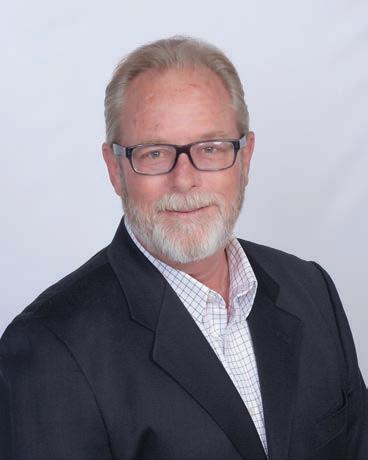
Republicans also argued that the amendment changed the bill too much and it should be sent back to committee for consideration. e bill passed the Senate State, Veterans and Military Affairs Committee in January on a 3-2 vote, with the two Republican members voting against it. roughout the debate, they offered amendments to exempt certain demographics from the bill, such as domestic violence survivors and veterans. ose amendments all failed.
Another successful amendment on the bill exempts about 40 of the most common semiautomatic ri es used for hunting and some relic rearms. e bill is set for a nal recorded vote early next week, when it needs 18 votes to get through. ere are 23 Democrats in the chamber. If it passes, it will then move to the House for consideration. Democrats have strong majorities in both chambers. is story is from Colorado Newsline. Used by permission. For more, and to support the news organization, visit coloradonewsline.com.

County donates $1M to drive that helps hospital toward goal
BY MCKENNA HARFORD MHARFORD@COLORADOCOMMUNITYMEDIA.COM
anks in part to a recent $1 million donation from Douglas County, AdventHealth is on track to open its cancer center in Castle Rock and begin treating patients by the end of this year.
e Douglas County Commissioners approved a $1 million grant to the Rock of Hope Campaign, which is raising $14 million to fund the rst cancer treatment center in the county. With the commissioners’ grant, the Rock of Hope Campaign has raised more than $10 million towards its goal.
Michelle Fuentes, the CEO of AdventHealth Castle Rock, said the organization is honored to receive the support from the commissioners and the community.
“I’ve never seen an entire project get funded through philanthropy, so, to me, that is a giant indicator of the trust that this community has in this hospital, their trust in the quality of care that we deliver and that we will be good stewards with their resources,” Fuentes said.
e commissioners’ grant also triggered a $1 million match from Castle Rock residents Lisa and Randy Schrader, who had previously donated an additional $5 million to the cancer center.
Douglas County Commissioner Kevin Van Winkle said the commissioners’ support AdventHealth’s e orts to make the
county a healthier place and bring needed services to the community.
“Anything we can do to make Douglas County happier and healthier, especially during such a trying and essential time as cancer treatment, we want to be a partner in that,” Van Winkle said. “We want to be a friend to those families. We want those services close to home.”
With the county’s grant, the cancer center is investing in cutting-edge technology in radiation therapy called Vision RT, which is a technology that links a patient’s unique biometric signature with their personalized treatment plan. is ensures patients only receive the radiation they are prescribed.
AdventHealth Castle Rock will be one of three hospitals in the country with this technology.
“ e purchase of the state-of-the art system really takes Douglas County from a place that is a cancer care desert to one of the leaders in the entire state of Colorado, on the cutting edge of technology helping families through that trying time,” Van Winkle said.
Fuentes said the cancer center will provide medical oncology, chemotherapy and radiation services to its patients. AdventHealth diagnoses around 400 patients per year with cancer.
Currently, many of AdventHealth’s patients have to drive to hospitals in Denver and Aurora to receive treatment. Fuentes said bringing care locally will help alleviate strain on patients.
“When you’re on the chemotherapy side of the world, you get very sick, and so you want to spend as little time in the car as you can, because many of our patients get nauseated and feel just very ill with



their driving,” Fuentes said. “Some patients have a port that’s up by their shoulder, so it’s even hard to have a seat belt on. So if you can limit that time in the car, you’re making it more comfortable for the patient to go to their therapies.”
e county estimates that the cancer center will also add more than 100 jobs contributing around $10 million in wages. e center is expected to generate almost
$250,000 in tax revenue annually.
Fuentes said the hospital is planning to start treating its rst patients at the cancer center in December.
“By adding this oncology service, it really rounds out all the services that we provide and I feel good that we are providing the city of Castle Rock and Douglas County with comprehensive health care services,” Fuentes said.

BY HALEY LENA HLENA@COLORADOCOMMUNITYMEDIA.COM
The Douglas County Sheriff’s Office on Feb. 20 announced the arrests of six additional people in relation to the two shootings at Main Event entertainment center in Highlands Ranch that happened earlier this month.
Shortly after the shooting, 23-yearold Denver resident, Nevaeha Crowley-Sanders, was arrested Feb. 9 and is currently being held on a $1 million bond and is facing 104 charges.
Charges include one count of attempted murder in the first degreeafter deliberation, four counts of attempted murder in the first degree-
Corr said many of the CTE programs have wait lists, so the district is always looking to grow its o erings.
e demographics for the CTE programs closely follow that of the overall district,
extreme indifference, one count of assault in the first degree, 47 counts of felony menacing-real/simulated weapon, one count of criminal mischief, one count of carrying a concealed weaponknife/gun, one count of prohibited use of a weapon-firearm, one count of prohibited use of a weapon-reckless with gun, and 47 counts of reckless endangerment.
After conducting witness interviews, reviewing surveillance footage and going through pieces of evidence, authorities have also arrested the following people on the following charges:
Niyonii Crowley-Sanders, 21, of Denver. Niyonii faces one count of accessory to attempted first-degree murder, nine counts of accessory to attempted murder in the first degreeextreme indifference, four counts of accessory to assault in the first degree, 10 counts of accessory to illegal dis -
which Dan McMinimee, executive director of schools, said shows that the opportunities are accessible for anyone interested in them.
“ e thing I’m most proud about is the way we are serving all students,” McMinimee said.
In addition to CTE programs, the district o ers students concurrent enrollment classes, where students can earn college
charge of a firearm, 47 counts accessory to menacing, one count of accessory to criminal mischief, 47 counts of accessory to reckless endangerment, one count of accessory to unlawful carrying of a weapon, and one count of accessory to prohibited use of a weapon.
Keylonie Fenery, 23, of Aurora. Fenery faces one count of accessory to attempted first-degree murder, nine counts of accessory to attempted murder in the first degree-extreme indifference, four counts of accessory to assault in the first degree, 10 counts of accessory to illegal discharge of a firearm, 47 counts accessory to menacing, one count of accessory to criminal mischief, 47 counts of accessory to reckless endangerment, one count of accessory to unlawful carrying of a weapon, and one count of accessory to prohibited use of a weapon.
Lorine Stegall, 22, of Arvada. Stegall
credits, and work-based learning. e district also participates in the ASCENT program, which is a fth-year high school program with concurrent college enrollment. e district partners with businesses for work-based learning, which provides students with job experience and mentorships. McMinimee said the program is a pipeline for students to transition from school into their careers.
faces one count of felony menacingreal/simulated weapon and carrying a concealed weapon knife/gun.
Devonta Jackson-Keys, 29, of Denver. Jackson-Keys faces charges of tampering with physical evidence and accessory to the crime of menacing.
Kiacia Jackson, 22, of Denver. Jackson faces charges of assault in the third degree, disorderly conduct-fighting in public, and unlawful possession of a controlled substance
Ajie Fair-Munoz, 24, of Denver. FairMunoz faces charges of assault in the third degree and disorderly conductfighting in public
All six additional suspects have bonded out, according to the sheriff’s office.
As this is an ongoing investigation. Authorities encourage anyone with information related to the incident to call Metro Denver Crime Stoppers at 720913-STOP(7867).
“We’re trying to tie (the work-based learning) to the CTE programs, so a student can not only do the work in the classroom, but they can also see what the work would be like if they transition into that ( eld),” McMinimee said.
e district is projecting that there will be more than 44,000 student requests for concurrent enrollment and CTE programs next year.

Columbine survivor lived life to the fullest
BY ELISABETH SLAY ESLAY@COLORADOCOMMUNITYMEDIA.COM
Two months before the 26th anniversary of the 1999 attack at Columbine High School, Anne Marie Hochhalter died due to complications from injuries she sustained during the shooting, which left her paralyzed.
She died on Feb. 16 at the age of 43, said Sue and Rick Townsend, who were close to Hochhalter and who lost their daughter, Lauren, in the shooting on April 20, 1999.
e Townsends were planning to have lunch with Hochhalter on Feb. 16, but when they didn’t hear from her, they asked police to perform a welfare check. Sue Townsend said that’s when police found that Hochhalter had died in her sleep.
“Anne Marie was our acquired daughter,” Sue Townsend said. “We became very close after Columbine happened … and I was looking for a way to heal after losing Lauren and I heard that Anne Marie’s family was struggling.”
Sue Townsend explained that in addition to her injuries, Hochhalter lost her mother to suicide six months after the shooting. Sue Townsend o ered to help 17-year-old Hochhalter during her initial recovery.
“ at’s how the relationship started,” Sue Townsend said. “Over the years, we just became very close. She became part of our family. She spent holidays with us. She went on vacation with us.”
Hochhalter was one of 21 people injured on April 20, 1999. She was shot during the attack that killed 12 students and one teacher. e shooters also took their own lives.
“My wounds were the worst ones the doctors saw that day, and a few months later, one of them told me that when I get older, I have to be prepared for it to catch up to me,” Hochhalter said in a Facebook post on the 24th anniversary of the Columbine shooting. “I’ve appreciated the many years of decent health, being able to go on amazing trips with friends and family, making memories, and I’ve truly lived the best life possible in honor of those whose lives were forever cut short that day.”
‘The best life possible’ ough she struggled, Sue and Rick Townsend said Hochhalter really did live her life to the fullest.
“She was fun-loving,” Sue Townsend said. “She had a great sense of humor. She was ercely independent. She advocated for others in the disability community … She wanted to be known as a survivor.”
Former Columbine High School principal Frank DeAngelis, who was the Columbine principal in 1999, said Hochhalter was an inspiration who persevered.


Hochhalter was a junior when the shooting happened, and was in the marching band prior to her injuries, he said.
“I can remember her continuing to be with the marching band and doing that, and when she reentered the school … she continued to help and be an inspiration to others,” DeAngelis said. “She was just a phenomenal human being.”
Dog lover with a sense of humor
e Townsends said Hochhalter loved dogs, would foster them and work with a local rescue. She had had four dogs throughout the entire time they knew her.
“She probably knew all of the dogs in her neighborhood, and not necessarily the neighbors,” Sue Townsend said. “She was drawn to dogs.”
Additionally, Sue Townsend described Hochhalter as a lover of science ction movies and someone with a fun sense of humor.
“One of my last memories is of her being here this last Christmas. Anne Marie and one of our other daughters and our granddaughter were all sitting around — and all three of them were all talking at once and laughing,” Sue Townsend said. “It was just kind of chaotic when I looked at how they could all talk and hear at the same time. She just brought a lot of joy to people who were around her.”
Rick Townsend said Hochhalter loved being active as she would frequently join the family on trips to Breckenridge. She didn’t let her injuries slow her down, he added.
“She’d go out on canoes and pontoon boats,” Rick Townsend said. “She drove, graduated college. She did all of this when she was in constant pain. She had phantom pains in her leg that were terrible. It would come and go but it was frequent.”
Hochhalter endured many complications due to her spinal injury, but she did her best to move forward.
“She’d have times when she’d get discouraged and get down, but then she’d pull herself back up and be right back in there ghting again,” Sue Townsend said.
Support from Columbine community
DeAngelis said there has been a lot of support from the “Columbine alumni family” since Hochhalter’s death.
Sue and Rick Townsend said they’ve received an overwhelming amount of support from their family, the Columbine community and beyond.
“We’re getting a lot of support from our community here, where we live,” Rick Townsend said. “ en also I just call it the Columbine community. It’s a big and supportive group.”
Sue Townsend said that when something such as Hochhalter’s death occurs, it brings up the 1999 Columbine shooting.
“We were all so bonded through that experience and so those people have just been phenomenal in o ering comfort and reaching out to us,” Sue Townsend







in 2024 for the 25th anniversary of the
“I got a chance to talk to her,” DeAngelis said. “She never considered herself a victim. She would always go out, whether it be after the shootings in Aurora, wherever those events would be, Anne Marie
Funeral arrangements are still being made for Hochhalter, but once plans have been made, the Townsends said







Columbus at







in Parker

















Some athletic programs defer to CHSAA, others hold own positions
BY ELISABETH SLAY ESLAY@COLORADOCOMMUNITYMEDIA.COM
Various school districts and sports organizations in Colorado are weighing in on a recent executive order, Keeping Men Out of Women’s Sports, issued by President Donald Trump in early February.
e order has raised concerns and sparked discussions regarding the participation of transgender individuals in school athletics, particularly in women’s sports.
Keira, a representative from Team Trans, an international collective of trans and non-binary hockey players, expressed concerns over the executive order’s implications. (Keira requested to not include her last name due to safety concerns.)




“It’s a non-issue that not only lacks scienti c support but is also so minuscule — consider that only 12 athletes in the NCAA identify as trans out of over 500,000,” Keira said. “ e fact that this has become a major focus for this administration and the preceding election is not just a waste of time and e ort, but also dangerous.”
e Colorado High School Activities Association has been a key organization involved in the conversation. In response to the executive order, a representative from CHSAA said the organization is aware of the order and is monitoring both state and federal statutes.
In a Feb. 10 email to Littleton Public Schools obtained by Colorado Community Media from a Colorado Open Records Request, CHSAA updated school districts on the steps it’s taking. “ e order aims to bar transgender athletes from participating in girls’ and women’s sports, creating a direct con ict between federal directives and existing Colorado state law,” documents state. “We recognize that this development places our

member schools and CHSAA as a whole in a di cult position, as it raises legal and operational questions that are not yet fully answered. As always, when federal actions con ict with state law, our goal is to ensure clarity, compliance and support for our membership as we navigate this complex landscape.”
CHSAA goes on to state that it’s still trying to determine answers to questions regarding the impact and the legality of the order.
“While questions have been raised regarding the intersection of this order with Title IX and Colorado state law, we will do our best to nd answers to those questions and to provide appropriate guidance,” CHSAA said.
“As the legal landscape continues to evolve, we will remain engaged and provide updates as new information emerges.”
Additionally, CHSAA clari ed that Colorado state law remains in e ect and protects people from “discrimination and harassment in schools based on disability, race, creed, color, sex, sexual orientation, gender iden-

tity, gender expression, family composition, religion, age, national origin, or ancestry.”
“CHSAA is committed to understanding the potential implications of these new federal directives, and we will share more information with you as it becomes available,” the organization said.
Many school districts — including Englewood Schools, Jefferson County Public Schools and Westminster Public Schools — have said they will follow CHSAA’s lead.
Douglas County School district Superintendent Erin Kane said at the school board’s Feb. 11 meeting that the district is already following an injunction that kept it in line with Title IX in 2020 and the district’s policies are consistent with those rules.
“Our biggest takeaway is that we need to let the dust settle and gure out where everything lands because right now, there are federal departments making recommendations as to what happens next,” Kane said.
Westminster Public Schools has an enrollment of 7,661 stu-
dents and district spokesman Steve Saunders con rmed that, as of now, CHSAA’s policies regarding transgender athletes remain unchanged.
Je erson County Public Schools said it will continue to follow all Colorado state laws when it comes to how the district treats students, sta and families.
“Physical education, intramural and interscholastic activities are managed in accordance with district policy regulation, which includes the CHSAA’s Transgender Inclusion Bylaw & Policy,” the district said. “ e policy states, ‘students should be permitted to participate in physical education classes and intramural sports in a manner consistent with their gender identity. With regard to interscholastic activities, the district will follow the CHSAA Transgender Policy Statement.’”
South Suburban Parks and Recreation, which manages youth sports programs and doesn’t receive any federal funding, said it would not be making any changes to its policies.
“Our goal at South Suburban is to provide safe and inclusive recreation opportunities for all members of our community,” said Becky Grubb, South Suburban communications manager.
South Suburban also referenced its existing transgender and non-binary policy, and afrmed that no changes would be made in light of the new directive.
When asked how common it is for transgender women to participate in women’s sports at South Suburban, the organization replied that it does not track this information.
Keira, from Team Trans, pointed out that the debate surrounding transgender athletes goes beyond the concerns of trans individuals, with cisgender women, particularly women of color, facing discrimination based on arbitrary expectations of their bodies.
In 2022, a cisgender high school girl in Utah was investigated for being trangender after placing rst in a state championship. Complaints from the parents of her competitors who came in second and third place prompted the investigation. Additionally, in 2023 a 9-yearold girl in Canada was accused by an adult man of being transgender while she was competing in a track meet. “ is ‘debate’ has led to cisgender women and girls — especially those of color — being subjected to discrimination simply for being perceived as ‘too manly,’” Keira said.
Keira said that many trans athletes view their participation in sports as vital to their wellbeing and mental health, and that no one is “pretending to be a woman” to succeed in athletics, but rather, to survive due to concerns for their safety.
Keira also pointed out the potential harm the executive order could cause to trans youth, whose rights may be threatened as a result.
“Trans kids are watching their rights being actively taken away, and we risk losing them,” Keira said. “ at is not OK. ey deserve to grow up in a world where they feel safe, seen and supported — and it’s on all of us to ensure that happens.”

























As residents of Elbert County, we want to express our gratitude to our outgoing Elbert County Commissioners Grant Thayer and Chris Richardson for their dedication and service over the past eight years. Their leadership has brought positive changes that will be felt for years to come.
When Commissioner Thayer and Commissioner Richardson took of ce, the county had nancial challenges. Today, Elbert County is a on solid nancial footing. They made sure departments were properly staffed and workers were paid fairly, which helped improve the services the County provides.
Thayer and Richardson’s key accomplishments include:

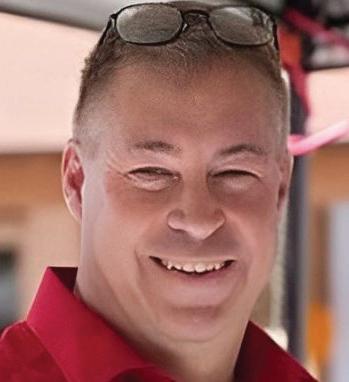
• Creating a $1.5 million emergency fund to address the 2023 oods, so the county didn’t have to cut services to handle the crisis
• Setting aside $5 million in savings to keep county services running during hard times
• Reducing property taxes by $3 million, making life easier for Elbert County residents
• Supporting individual rights and local businesses during COVID-19 – ensuring churches could stay open, schools could hold in-person classes, and restaurants and businesses could survive
Thayer and Richardson also improved how the county handles technology, ending an expensive contract with an outside IT company and building an in-house IT team. This change saved the county $500,000 a year and made services more ef cient.
The former Commissioners also focused on growing the local economy. They updated a 21-yearold master plan and made it easier for people to access county services. Their work created a more business-friendly environment that will help the county grow for years to come.
We are grateful for our outgoing Commissioners Grant Thayer and Chris Richardson for making Elbert County a stronger and better place to live and work. Their leadership leaves a lasting impact, and we thank them for their service. We wish the newly elected county commissioners the best and remain a valuable partner for economic growth in Elbert County.
The Elbert County Partnership is an educational organization with a mission to promote the common good and general welfare of Elbert County communities by bringing about civic betterment and social improvements, to protect the agricultural history, while promoting the county to be a great place to live and raise a family. Learn more at:


Technology and arti cial intelligence (AI) are accelerating growth across industries, revolutionizing personal and professional development at an unprecedented pace. From AI-driven tness equipment to sales enablement tools, we are surrounded by innovations designed to enhance performance, automate tasks and drive e ciency. But while technology is a powerful enabler, it does not replace the need for e ort, discipline, and the fundamental work required to achieve real results. Finding the right balance between leveraging technology and doing the work ourselves is key to maximizing success.

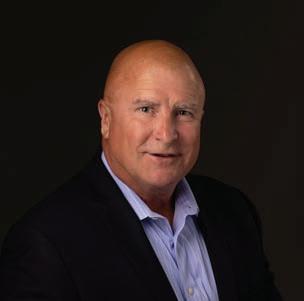
Take tness, for example. e latest AIpowered gym equipment can personalize workouts, monitor progress, and even provide real-time coaching. As someone who appreciates the newest advancements in the gym, I love the insights and structure these tools o er. However, no machine can push me beyond my limits quite like I can. Sometimes, I need to set aside the AI recommendations and pick up free weights, relying on my own discipline and intensity to achieve growth. e same principle applies in business, particularly in professional selling, where technology enhances performance but
does not replace the core fundamentals of success. In the sales world, thousands of AI-driven tools exist to support prospecting, pipeline building, research, pre-call planning, and customer relationship management. Managers, too, have access to sophisticated software that helps them track performance, analyze behaviors, and coach their sales teams more e ectively. ese tools provide a distinct advantage, equipping sales professionals with data-driven insights and e ciency-enhancing capabilities. However, no technology can replace the human element of selling, the preparation, the practice, the role-playing, the prospecting, and the relationship-building that separate top performers from the rest.
Consider AI-powered sales assistants that can generate email templates, predict customer needs, and recommend next-best actions. While these tools undoubtedly streamline processes, they do not replace the necessity of meaningful human interactions. A well-crafted AIgenerated email is helpful, but it cannot
Older adults and those who support them will learn how to embrace and live the longevity lifestyle at the Seniors’ Council of Douglas County (SCDC) monthly educational meeting on ursday, March 6 at the Douglas County Library, Event Hall A, 20105 E. Mainstreet, Parker. is meeting is free and open to the public.
Presenter Kelly O’Connor is an award-winning and highly trained leader in the aging services industry. Well known for her TEDx talk on longevity, she has a 15-year career in senior care.


experiences and informative presentations all designed for older adults. Save the date!

O’Connor will explain the longevity industry that has emerged and expanded around the globe since humans are living longer lives. She was recently named vice president of strategic partnerships and growth for the Society of Certi ed Senior Advisors and Editor of the CSA Journal.
States O’Connor, “ From personal healthcare to multigenerational living, I will provide clues and insights on how to live successfully for the long term.”
In other news, plans are underway for another full-day educational event, Vintage and Vibrant 2025, on Sept. 17 at the new Highlands Ranch Senior Center. is event will feature multiple interactive
If you are an older adult who loves to learn, visit DCL.org/ageless for information about programs and events, opportunities to connect, volunteer-
Did you know that research shows that volunteering is good for mental and physical health? Aging Resources of Douglas County, a valued supporter of SCDC, o ers various volunteer roles. Information is available at agingresourcesdougco.org.
A volunteer SCDC leadership team plans educational events and advocates for older adults in Douglas County. Opportunities exist for additional team members. Douglas County Community Services supports SCDC. To get involved email DCSeniorLIfe@ douglas.co.us. is guest column was written by Jean Spahr, the publicity chair for the Seniors’ Council of Douglas County, which promotes Living Well/Aging Well in Douglas County.
replicate the authenticity and nuance of a personalized message tailored from experience and genuine understanding of a client’s needs. Likewise, AI can analyze call recordings and provide feedback on tone and word choice, but a salesperson still needs to practice, re ne their delivery, and build con dence through real conversations.
e key is to work smarter, leveraging technology where it provides the greatest advantage while ensuring we remain actively engaged in the work that truly drives success. Sellers who rely too heavily on AI to do their jobs for them may nd themselves outpaced by those who blend AI’s capabilities with traditional sales fundamentals. e highest performers in sales are those who embrace technology as an enhancement rather than a substitute for e ort.
is principle extends beyond sales into all aspects of work and life. Whether it’s using AI to automate tasks, relying on machine learning to optimize strategies, or integrating smart tools into our daily routines, technology o ers an undeniable advantage. But ultimately, we must put in the time, e ort, and dedication required to achieve exceptional outcomes. AI can assist in writing a business proposal, but it cannot replace the deep
thinking and strategic vision required to craft a truly compelling pitch. It can analyze market trends, but it cannot build trust with a client. It can provide workout recommendations, but it cannot physically lift the weights for us.
As AI continues to evolve and integrate into every facet of our lives, the most successful individuals will be those who master the art of combining cutting-edge technology with a strong work ethic. ose who work hard and work smart, harnessing the power of AI while still putting in the sweat equity, will achieve accelerated growth both personally and professionally.
At the end of the day, success is not just about having the best tools; it’s about knowing when and how to use them while never shying away from doing the work that truly matters. I would love to hear your story at gotonorton@gmail. com, and when we can increase our slight edge in everything we do, it really will be a better-than-good life.
Michael Norton is an author, a personal and professional coach, consultant, trainer, encourager and motivator of individuals and businesses, working with organizations and associations across multiple industries.
Afarmer’s work is never done. Even in winter, farmers are planning for the next planting season. For many operations, planning ahead includes signing up for federal crop insurance.
e deadline to sign up for most types of coverage is March 15, 2025. As weather events become more unpredictable and severe and market uctuations continue, federally backed crop insurance is an essential risk management tool for many farmers.

A wide range of coverage is available for agriculture operations. Newer programs, such as Whole Farm Revenue Protection (WFRP) and its subprogram Micro Farm, serve small- to medium-sized, diversi ed, and organic operations particularly well. ese programs are available throughout the U.S. regardless of county and t all of an operation’s production under a single policy. e policies provide coverage based on an operation’s revenue history and protect against losses from natural causes, such as ooding, hail and drought, as well as losses from market changes.
Other types of coverage, including multi-peril yield and revenue protection, also support operations in times of loss. It is important for a farmer to speak with an agent to learn what type of policy best
Colorado Community Media welcomes letters to the editor. Please note the following rules:
• Email your letter to letters@coloradocommunitymedia.com. Do not send via postal mail. Put the words “letter to the editor” in the email subject line.
• Submit your letter by 5 p.m. on Wednesday in order to have it considered for publication in the following week’s newspaper.
• Letters must be no longer than 400 words.
• Letters should be exclusively submitted to Colorado Community Media and should not submitted to other out-




suits their needs and operation. Federal crop insurance is administered by the U.S. Department of Agriculture’s Risk Management Agency and sold by private agents throughout the country. To look for an agent, farmers can visit rma.usda.gov/ tools-reports/agent-locator. is resource now includes speci c help for farmers interested in WFRP and Micro Farm.
e Center for Rural A airs has developed several resources for farmers who are new to or have questions related to crop insurance. ese can be found at cfra.org/ crop-insurance-resources. One-on-one support is also available, and producers are encouraged to contact Kelsey Willardson at kelseyw@cfra.org if interested.
is guest column was written by Kelsey Willardson, a policy associate with the Center for Rural A airs, a private, nonpro t organization working to strengthen small businesses, family farms and ranches, and rural communities through action oriented programs addressing social, economic, and environmental issues.
lets or previously posted on websites or social media. Submitted letters become the property of CCM and should not be republished elsewhere.
• Letters advocating for a political candidate should focus on that candidate’s qualifications for o ce. We cannot publish letters that contain unverified negative information about a candidate’s opponent. Letters advocating for or against a political candidate or ballot issue will not be published within 12 days of an election.
• Publication of any given letter is at our discretion. Letters are published as space is available.
LETTER TO THE EDITOR

Fight for public lands
I love the land around me. From the chirping nches hopping through the bushes at Daniels Park, to the gusty winds that soar across the mountains while I backpack in Holy Cross Wilderness, the natural world grounds me. Every day, Colorado’s public lands sing us ringing songs, paint us one-of-a-kind landscapes, ll our bodies with nutrients and our souls with purpose. ey write us a love letter every day. I thought it was time we returned the favor.
Almost 40% of our state land is owned by the federal government alone. at means almost half of our state is open to all of us to explore. Our sweeping public lands boost our economies by providing jobs and creating revenue from recreation. And they increase our public health and build up our communities. Beyond the numbers and citations are the personal stories, like how I grab a co ee before heading to Wash Park for a walk, or the people I meet on a trail run through Alderfer/ ree Sisters Park. rough my public land appreciation, I am actively contributing to Colorado’s success… and my own. And yet, our public lands face new threats to their protection under the Trump administration.
Recently, my representative, Lauren Boebert, sent a letter to Energy Secretary Chris Wright arguing against the Department of Energy’s proposal for a National Interest Electric Transmission Corridor that cuts through private lands in southeastern Colorado. Her stance? at it violates Trump’s executive orders, raises concerns over rural Coloradans’ rights, and risks the local economy. But when it comes to public lands, she and the Trump administration eagerly throw their support to shucking o percentages to the highest bidder in the name of economic prosperity. Just take a look at the nomination of known oil and gas advocate Kathleen Sgamma to lead the Bureau of Land Management or the executive orders repealed in Trump’s Unleashing American Energy Executive Order. So why does my representative ght to protect private lands and not public ones? Does their ruination for a pro t and a newshour feature outweigh the bene ts they provide? I wholeheartedly say no. And I cannot, in good conscience, sit idly by to watch them disappear. Our public lands deserve a love letter of action to protect them, on and o the trails. I urge our state leaders to stand strong and love our public lands enough to ght for them.
Abby Freimuth, Castle Pines
Skepticism about rule of law
unknown, estimates suggest there may be up to 6,000 members across their claimed 146 U.S. chapters. e Oath Keepers may have up to 38,000 members. Regardless, these groups have demonstrated a consistent level of violence that extends beyond activities speci c to January 6.
If Weekly’s group is signi cantly concerned about immigrant terrorism, how about domestic terrorism from those Trump and Boebert erroneously label as political prisoners?
Here’s another fact — just three months after January 6, 2021, Darren Weekly and Tony Spurlock posed for a photo next to a DCSO executive leader wearing a ree Percenters shirt. ree Percenters also played a role in D.C. on January 6. at same individual remains employed by DCSO and has graduated from the conservative Leadership Program of the Rockies, a training program for aspiring politicians.

As an introspective Douglas County citizen, I am skeptical that Douglas County’s leaders are committed to the rule of law. I have adopted Weekly’s statement of clari cation: “ is is not about political a liation.”
e fact that the group of local elected o cials fawns over Trump gives me just cause for skepticism.
Lloyd Guthrie, Roxborough Park
Creepy stu

From Hurricane Katrina to the Marshall Fire, employees of the Denver ofce of the now-defunct Small Business Administration provided nancial assistance to victims of disasters around the country. Younger employees were red outright with older employees being placed on notice of their pending termination. ese employees had the nal nail pounded in their employment co n by having the computer screen on their desk, with camera and audio capabilities, activated daily.

On numerous occasions, Dougco Sheri Darren Weekly has expressed concerns about terrorists crossing the borders due to the failures of Biden and Harris. He took the podium at the Aurora Trump rally in October to voice these concerns. Fair enough. Immigration into the US has been a mess for decades.
Unfortunately, what our community does not hear from Weekly and his cohort of local elected o cials is a loud call for national bipartisan immigration reform.










One long-term SBA employee told me that having a camera focused about 20 inches away from her upper body is the most “creepy” feeling she has ever experienced in her lifetime.
What makes this move more creepy is no Republican elected o cial, including Douglas County, the most livable county in Colorado, has gone on record protesting this move by Trump/Musk. In the olden days their silence would have indicated acceptance.
Roy Legg, Highlands Ranch
Law enforcement stacking deck

In our community, what is nearly impossible to reconcile is Weekly’s complete silence on Trump’s pardons of January 6 criminals — Henry Tarrio (sentenced to 22 years as the leader of the violent Proud Boys) and Stewart Rhodes (sentenced to 18 years as the leader of the violent Oath Keepers). While the number of Proud Boys is



As a reader who lives near the venue where a deputy of the Douglas County Sheri ’s O ce (DCSO) fatally shot Jalin Seabron on Feb. 8, I am disappointed that DCSO is trying to in uence the public in its favor. DCSO’s Feb. 16 statement demonstrates what I mean: it de ects accountability that the police need to face in the wake of this terrible tragedy. It reads, in part:
“ rough the course of the investigation, detectives have determined that Mr. Seabron was related and was an accessory to the woman who is accused of ring multiple shots from a gun inside the business after a ght broke out in the women’s restroom. She is presumed innocent until proven guilty in a court of law. One female was shot multiple times as dozens of customers ran for cover. e ght spilled out into the parking lot as the female suspect exited the business with Mr. Seabron, who was armed with a di erent handgun.




















A publication of
750 W. Hampden Ave., Suite 225 Englewood, CO 80110
Phone: 303-566-4100
Web: ElbertCountyNews.net
To subscribe call 303-566-4100 or Scan this QR Code

BROOKE WARNER
Executive Director brooke@ntln.org
LINDA SHAPLEY
Director of Editorial & Audience lshapley@coloradocommunitymedia.com
CHRISTY STEADMAN South Metro Editor csteadman@coloradocommunitymedia.com
SCOTT GILBERT Editor sgilbert@coloradocommunitymedia.com
ERIN ADDENBROOKE Marketing Consultant eaddenbrooke@coloradocommunitymedia.com
LINDSAY NICOLETTI Operations/ Circulation Manager lnicoletti@coloradocommunitymedia.com
BUSINESS INQUIRIES
For advertiser or vendor questions, please email our business department at accounting@ coloradocommunitymedia.com
Columnists & Guest Commentaries
Columnist opinions are not necessarily those of the Elbert County News.
We welcome letters to the editor. Please include your full name, address and the best number to reach you by telephone.
Email letters to letters@coloradocommunitymedia.com
Deadline Tues. for the following week’s paper.
BY NICKY QUINBY SPECIAL TO COLORADO COMMUNITY MEDIA
Snow and ice accumulate along Highway 86 in Kiowa each winter, creating hazardous conditions for everyone. A new project provides Kiowa the chance to improve the poor drainage, lack of ADA compliance, and generally aging infrastructure.
A small crowd gathered at the Agricultural Building of the Elbert County Fairgrounds the night of Feb. 13 to hear more about proposed sidewalk and drainage improvements. Business owners, property owners and community stakeholders attended. Representatives from Kimley-Horn and Associates — an engineering, planning and design consultancy — were there to explain more about potential plans and gather feedback.
e proposed improvements will be made along Highway 86 from the western end near the car wash all the way to County Road 45. Jeremy Kahn, Blake Young and Mike Gri th were on hand to give a brief presentation about the scope and timeline of the project. Afterwards, attendees were invited to peruse visual aids prepared by Kimley-Horn, share feedback one-on-one, and ask questions.
Improvements include ADA-accessible sidewalks, better drainage infrastructure, streetscape elements (seating, trees, etc.), curb ramps, bike facilities, safe pedestrian crossings and a possible tra c signal at Kiowa-Bennett Road.

ELBERT COUNTY NEWS (USPS 171-100)
A legal newspaper of general circulation in Elizabeth, Colorado, the Elbert County News is published weekly on Thursday by Colorado Community Media, 750 W. Hampden Ave., Suite 225, Englewood, CO 80110.
PERIODICALS POSTAGE PAID AT ENGLEWOOD, COLORADO and additional mailing o ces.
POSTMASTER: Send address change to: Elbert County News, 750 W. Hampden Ave., Suite 225, Englewood, CO 80110


A story on the Edward S. Curtis exhibit at the Lone Tree Arts Center that ran in the Feb. 20 edition was updated to correct information about the exhibit and the correct spelling of Steve Fisher’s name. To read the updated version, visit the story online at https://tinyurl.com/CCMCurtis-LoneTreeArts.

e amount of snow Kiowa receives in the winter, and where to put it, is a major concern. Kimley-Horn said that a pipe will probably be laid in the center of the road, with catch-basin inlets on the curb to redirect snowmelt and water. It will need to be sent to a stormwater facility to be treated before emptying into Kiowa Creek. Pullouts or bulb-outs on the roadway could be one option for creating extra space to plow snow without impeding tra c or pedestrians.
Kimley-Horn will continue taking in data from online surveys and combining that with in-person feedback received. “ ey will continue revising the project concept
He works diligently to obtain grants andnancing that allow the district to purchase updated equipment for the safety of the members and community all without raising taxes.”
Tammy Smith, the department photographer and website administrator, agrees, saying, “Chief Homer has done so much throughout his 33 years on Elbert Fire Protection District and as Elbert’s re chief, to not only improve the safety of the community of Elbert, but also to improve the quality and safety of the members of the re department itself with updated training and equipment. He has done it all with little to no recognition which he completely deserves.”
Many others received recognition that evening as well. Jesse Frisius was recognized for achieving both his Fire ghter 1 and EMT certi cations. He also received an award and leather helmet for putting in the most station hours. Chuck Altvater and Peter Richardson received their Fire ghter IV certi cations. Greg Albers received his Fire ghter 1 certication and Kasey Albers received her CPR Instructor certi cation. Colin Moore received both Fire ghter 1 and IV certi cations as

based o that data and feedback because ultimately we want the nal product closest to what the community itself wants to see …,” said Kiowa Town Administrator Kim Boyd. e current plan is to have at least two more community meetings, with the next one possibly in April or May.
Next steps also include nding a contractor and construction funding, hopefully by the spring or summer of 2026.
To take the CO-86 Sidewalk and Drainage Improvements Survey, visit tinyurl.com/ kiowa-86.
For more information, email Boyd at kboyd@townofkiowa.com or Jeremy Kahn at jeremy.kahn@kimley-horn.com.





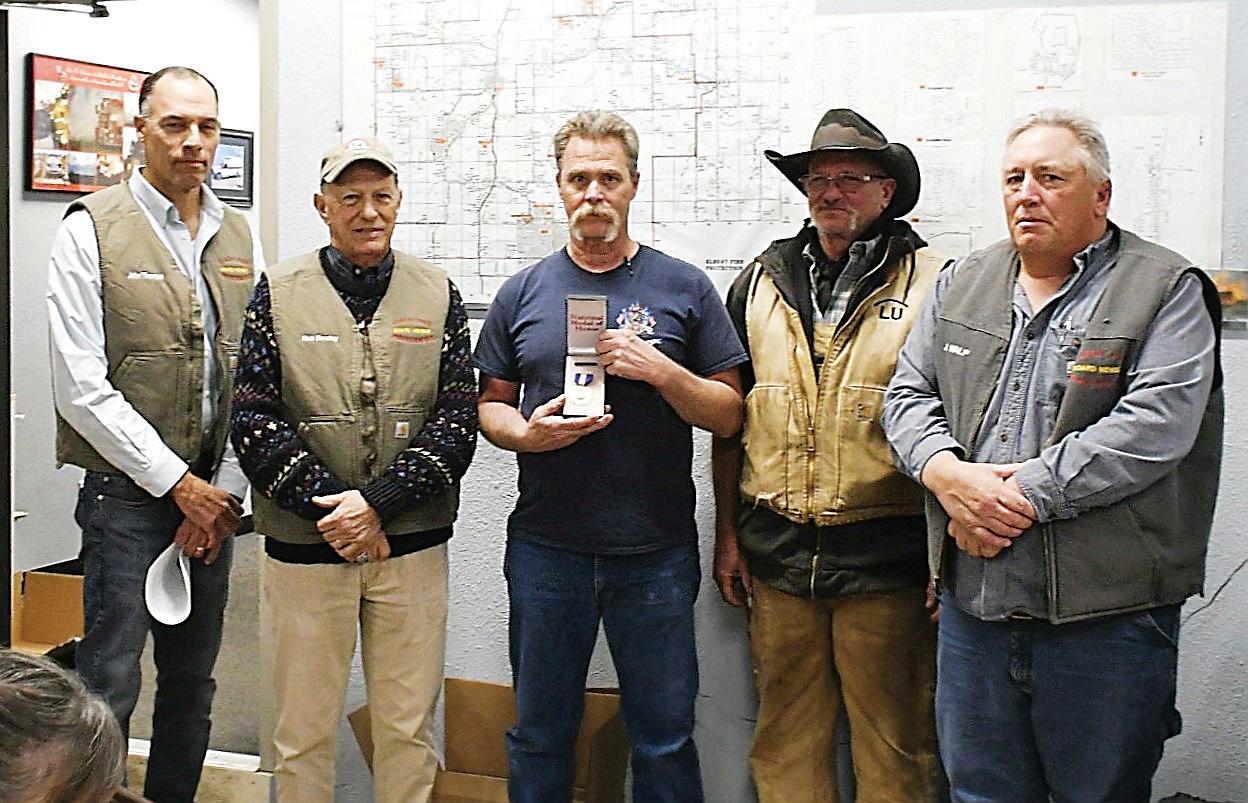

EFPD has a new website, elbert re.org,




High schoolers visit state capitol in YMCA program
BY STUDENTS WITH THE 2024-2025 YOUTH IN GOVERNMENT PROGRAM
SPECIAL TO COLORADO COMMUNITY MEDIA
About 100 high schoolers from across the state visited the state capitol in late November to gain knowledge and leadership skills about the inner workings of the government.
e students were all participants in the YMCA of Metro Denver’s 70th Youth in Government Conference, which provided the high school students with a unique experience in the legislative process. e students participated in mock legislative sessions in downtown Denver at the Lindsey Flanigan Courthouse as as members of the House, Senate or judiciary branches, and acted as lobbyists or members of the press. e opportunity provided a deeper understanding of how state and local governments operate and the importance of young people’s involvement.
“ e most impactful part for me is seeing everyone’s perspectives,” said Luka Nieto, who is future student lieutenant governor from Lakewood High School. “So many di erent backgrounds and classes, all at Youth in Government.”
e event focused on issues that are prevalent in today’s society, allowing students to draft bills, debate and vote on mock legislative measures. rough these activities, they learned the practical skills needed in the political world, along with many important skills used in daily life.
Programs like Youth in Government offer students an opportunity to bring fresh perspectives and ideas to politics. eir involvement can raise awareness about important issues and help shape policies

that impact their generation.
Youth In Government also helps students develop leadership skills and promotes a sense of responsibility towards society.
“ is year speci cally, I loved how people worked together,” said participant Jonah Morris, a junior at Resurrection Christian School in Loveland.
“It’s an interesting spin on mock government emulating an actual government setting,” added Ari Hon Gupta, a freshman at Cherry Creek High School.
When asked about his experience at the conference, Gupta said, “I am very, very happy I came and guarantee I am going to do it again next year.”
e YMCA’s Youth in Government Conference provides an opportunity for young people to gain knowledge, leadership skills and a sense of empowerment for the future. Guest speakers, such as state legislators and community leaders, also share their experiences, motivating students to consider careers in public service and to get involved in their communities.
“Experiencing the inner workings of a mock government has opened my eyes to how important it is to know how our country is run,” said this year’s Youth in Government Editor in Chief Avery Gra , from Resurrection Christian School. “It has truly taught me more than any government class could.”
Learn more about the YMCA’s teen advocacy programs, including Youth In Government, at https://denverymca.org/ teen-programs.
e 2025 Youth in Government media relations team consists of Avery Gra , Resurrection Christian School; Avani Moreschini, Pueblo County High School; Lucia Blanch eld, Fairview High School; Luke Yowell, Resurrection Christian School; and Nayive Garcia, Pueblo West High School.





























BY BELEN WARD BWARD@COLORADOCOMMUNITYMEDIA.COM
hat started with an old video camera in a French resort and a syndicated kids’ program about ocean conservation has become an award-winning Colorado-based commercial video production company, claiming high-pro le national brands like Apple, Disney, Under Armor, Noodles and Co., and Seagate Technology as clients.
And now, Boulder’s La Storia can put breaking the sound barrier on the company’s resume.
“My brother and I started the company in North Carolina mainly because we had a couple contacts there who we thought might be interested in videos,” said La Storia cofounder RC Walker. “
“We were two brothers from Aspen with no background in lmmaking. ankfully, we met incredible people early on who believed in us, plugged us in, and helped us get connected. We’ve learned and evolved from there.”
e Boulder couple behind La Storia Productions, Walker and his wife Molly McKinney-Walker, made history this past January when their company was hired to document Boom Supersonics’ XB-1 aircraft breaking the sound barrier — the rst civilian company to do that — over the Mojave Desert.
“Our partnership with Boom has been unique. We essentially have served as a key creative partner for the brand overseeing many of their photo and video campaigns and 3-D animation,” Walker said.
“ e Boom event itself was a phenomenal milestone for aviation, but working with the engineers and ground crew on the team was such a fascinating experience for us as lmmakers. ey’re the lifeblood of operations like this, so it was empowering to see this mission through their eyes and build that into the story we were telling in front of a live audience.
e La Storia crew used 18 cameras — seven on the ground and 11 in the air — to capture every angle of the historic moment with Boom’s Supersonic XB-1 experimental aircraft.
Walker said he was a nance accounting graduate from the University of Colorado looking for adventure when he got interested in lmmaking.
“After graduating from CU Boulder with a degree in Finance, I decided to play ‘hooky’ and spent a few years living in Hawaii before going to France. I worked in the Alps, where I had an old camcorder, and my roommates and I started making short lms. Films had always inspired me, but this moment of creativity behind the lens ignited a deep love of cinematography and changed my life trajectory.”
“But my brother had been working in North Carolina for a non-pro t, so he at least had a small network of connections. So in 2013, I moved to Charlotte, and we o cially launched La Storia Productions out of our tiny apartment,” Walker said.
“ ankfully, our love and passion for storytelling, along with lots of hard work, introduced us to some incredible people who we still consider some of our closest friends, and they helped us tremendously,” Walker said.
“ ey connected us with the Charlotte creative community and helped us collaborate with like-minded clients. But the best of these introductions during this time was that Geo and I each met our wives on our own lm sets and still get to work alongside them today.
Meanwhile, his future bride made a name for herself on children’s television. Molly McKinney-Walker said her background started in television with a commercial when she was three.
“I got into the industry at an early age and was incredibly blessed to have had the positive experiences I’ve had. My rst big opportunity was at seven years old when I was cast to host the TV, Aqua Kids, an environmental children’s TV show about protecting marine and aquatic environments,” McKinney-Walker said.
“I continued to host this show until I was 24 years old, and I learned so much during this time, both as a talent in front of the camera and lmmaking behind the camera.”




She began trading her spot in front of the camera for a producing role, where she interviewed scientists and animal educators on camera.
“ is is actually how I fell into becoming an Executive Producer, since it started making sense to plan and pre-interview the scientists and animal educations I would eventually be working with on-camera,” McKinney-Walker said.
After graduating college and moving on from the show, she started freelancing, producing at La Storia for nine months before she was hired full-time.
After graduating college and moving on from the show, she started freelancing, producing at La Storia for nine months before she was hired full-time.
Both McKinney and Walker settled in Charlotte, North Carolina for a while but relocated to Boulder just before COVID-19 hit. McKinney-Walker said they got the Boulder o ce and nished remodeling it in December 2019 but couldn’t use it for a few months due to COVID-19.
“We had a brick-and-mortar location in North Carolina and planned on keeping it and opening a second mid-west location to compete with the Los Angeles market, but as with so many other industries, COVID-19 changed that plan for us,” McKinney-Walker said. e La Storia team had even built a whole new set for a major tech company client on their campus in San Jose, Calif., but they never used it due to the pandemic. “It was beautiful with painted wood walls and a multi-functional background,” Walker said. “But with COVID, we couldn’t get into the o ce, so we ended up pivoting and rebuilding the entire set in our home basement to lm the content our client needed. I guess that’s one of the perks of a cinematographer and a producer being married and quarantining together. We were able to utilize our available resources and help our clients solve problems,” Walker said.
The story behind La Storia
Walker said they came up with the name La Storia early on.
“We wanted to choose a name with international


air. I had spent time living in France but phrase story had a complex spelling in French, so we aimed for simple and memorable,” Walker said. “My brother had spent time living in Italy, and in Italian, the translation for ‘ e Story’ has a dual meaning. It captures history and modern-day storytellers, sharing the importance of timeless stories that must be told.”

McKinney-Walker said one of La Storia’s longeststanding clients, Seagate Technology, one of the largest tech companies that makes hard drives in the world, has worked with their company for almost 11 years. McKinney-Walker said being a creative partner is something they can o er their high-caliber clients.
“I think our high client retention rate with high pro le clients re ects the relationship and partnership mentality we have with our clients. Ironically, as a production company that provides photo and video marketing solutions for our clients, we’ve never done marketing for ourselves. We truly operate on a word-of-mouth referral system, which works for us. I always say when think about our clients, we take their brands on as our own,” McKinney-Walker said.
“It de es a typical traditional agency model with established brands; we already have a strong in-house marketing team,” she said. ” We can provide triage support when they are overworked or need help scaling up for something they don’t have the in-house resources for, like the project we traveled to the Mojave Desert for recently, to lm Boom Supersonic.”
Walker said it was fascinating working so closely with the Boom team and getting the honor of telling their story, learning and understanding the process, cadence of the tests, crew safety, and camera angles.
“I’ve worked in daily communication with Kaden Colby, Head of Creative Production and Events at Boom Supersonic, for over a year to prepare for their supersonic test ight. is was the sixth ight we’ve shot for them,” Walker said.
McKinney-Walker said Boom wanted to be authentic and live on the day of the shooting, so they wanted people to feel like they were there. Event coverage had not been done to the extent their team pulled it together, with many partners involved, to make that possible from a story brand standpoint.
“As a company specializing in creating 30-second commercials for many of the brands we work with, getting to have a project like Boom’s supersonic ight was
taxiing out,” is a massive moment for this team, but it’s often not shown in the movies.”
McKinney-Walker said that for them, it’s never just about showing up and doing a job; they felt the emotion of getting to know them for a year. When they handed the aircraft over to Geppetto, it was uncertain whether he would return from that ight. It’s about life and visually communicating these people’s trust in each other and the unknowns from pushing innovative boundaries.
“With clients like Boom who are pushing the boundaries of what’s possible, it’s a contagious energy that encouraged us to push the realm of what had been done for our industry as well for events like this,” McKinneyWalker said.
“ e Boom event was unique, and we wanted to capture the immersive moment. However, we’re responsible for ensuring no safety issues present or distract the ground crew from performing their duties,” Walker said.
“We took tremendous care in the choreography of our cameras so they could do their job, ignore us and stay focused. From a safety standpoint, they knew when our cameras were in position, where our guidelines were, and most importantly, after a year together, they trusted us.”
For more information about La Storia, visit https:// lastoriaproductions.com/
General Inquiries: info@lastoriaproductions.com
Interested in Hiring La Storia: molly@lastoriaproductions.com
For information about LSP Film Rentals, Cyc studio, Cinema Camera Rental House & Prep Space, please visit https://www.lsp lmrentals.com/.
Studio and Rental Inquiries: cheers@lsp lmrentals. com
BY MARC SHULGOLD SPECIAL TO COLORADO COMMUNITY MEDIA
e plot seems simple enough. In theater parlance, Marsha Norman’s 1983 Pulitzer-winning “’night, Mother” is known as a two-hander. Just two characters — a mother, elma, and her adult daughter, Jessie. at’s all. But don’t be fooled. As we witness a day and a night spent with these two, they talk about their lives in ways they had never imagined when the sun came up.
is brilliant drama — sometimes sad, sometimes funny, inescapably revealing — opens on Feb. 28 for a limited run at the Town Hall Arts Center in Littleton, starring two of the Front Range theater’s most admired actors (and experienced collaborators), Billie McBride as elma and Megan Van De Hey as Jessie. Bringing an equal dose of know-how (and, importantly, a deep respect for the pair) is director Joye Cook-Levy.
In separate phone interviews, Van De Hey and Cook-Levy shared their thoughts on the preparations and insights that the threesome employed to bring Norman’s play to the Littleton theater’s stage.
“Hey, a lot of your work (as a director) is already done with these two,” Cook-Levy remarked, in praise of her two veteran actors.
In the small world of local theater, everyone knows everyone — or knows of everyone, which makes life easier when the allotted rehearsal period is only three weeks. She added that, a year ago, the cast had been asked who they wanted to work with and both called out for Cook-Levy. at was the easy part.
“You have to do your home-



work,” Van De Hey said of the preparation process. And that goes way beyond learning the lines — it’s a team e ort. “We create this thing together, the three of us. I’ve done onewoman plays, where you can do what you want. But these twohanders are something special. ey’re beautiful, terrifying, gratifying. What makes it so special is that you feel so energized working with real pros.”
At this point, it’s time for a mini-spoiler alert. As CookLevy explained, “Norman believes that a playwright should share with an audience what their characters are about in


the rst eight minutes.” And so, about eight minutes into “’night, Mother,” Jessie makes a casual announcement as she calmly cleans her late father’s gun. elma hears it as a joke at rst, until Jessie repeats it with full seriousness: She intends to kill herself. What follows is an extraordinary glimpse into the lives of these two — the daughter resolute and meticulously prepared, the mother confused, pleading, smiling, grieving. Emotions travel all over the map as we learn important family history along the way.
“We peel back one layer after another, and there are dark lay-
ers in a mother-daughter relationship,” Van De Hey said. “After awhile, you start to see how helpless Jessie feels — that she never did anything correctly. She feels empty, but that she believes she’s doing the best thing for herself and her mom.”
From a director’s point of view, having two veteran actors who enter rehearsals with such experience and a deep insight into their roles is invaluable.
But it’s just the beginning of the process. So, how did Cook-Levy prepare before her rst day of rehearsal — besides reading the script multiple times?
“I worked with the (stage) de-
signers, making some sketches of the set, suggesting a picture window, a chair placement, things like that. We had to have a kitchen, a master bedroom, a door. I had also done a lot of reading. I like to read reviews of other productions — what was successful, what worked. And some academic reviews,” CookLevy said.
One of them compared the play to the Greek myth of Persephone and her mother Demeter. Another article pointed to Norman’s numerous references to sugary items and terms of sweetness. Little details. en rehearsals commenced with a full reading, the second day spent blocking (positioning actors as they moved about).
“I’m never about controlling my actors,” Cook-Levy said. “On the rst pass, I always let the actors dictate. en I can ask questions.”
As work continued, she broke up sections into what she called beats, giving some of them titles. e play runs continually with no scene breaks or an intermission.
All this preparation can go only so far. Once the house lights dim, the audience quiets and the stage lights brighten, everything shifts. at’s the magic of live theater — and it never gets old.
“Adding that audience — it changes the piece,” Van De Hey said. “You’re so close to them. Each night is di erent. Each night you continue to strive.” is coverage comes courtesy of a grant from the Littleton Arts and Culture Program. As a matter of policy, funders exercise no control over editorial decisions.
Town Hall Arts Center, 2450 Main St. in Littleton, is presenting Marsha Norman’s “’night, Mother” through March 9. For more information, visit https:// townhallartscenter.org or call 303794-2787, ext. 5.









Thu 3/06
Palomino Blond + High. + Moonpool + Blackberry Crush @ 7pm
Hi-Dive, 7 S Broadway, Denver

Friends of Chamber Music Denver:
Benjamin Beilman, violin and Steven Osborne, piano
@ 7:30pm
Newman Center for the Performing Arts, 2344 E Iliff Ave, Denver

Josh Wolf
@ 7:30pm
Comedy Works - Larimer Square, 1226 15th Street, Denver
Jehry Robinson
@ 8pm
Oskar Blues Grill & Brew, 1624 Market St, Den‐
ver
Fri 3/07

Dotsero @ 7pm
Dazzle Denver, 1080 14th Street, Den‐

Mike Clark & The Sugar Sounds: Album Release, Denver CO @ 8pm
Skylark Lounge, 140 S Broadway, Den‐ver

Sat 3/08
Tantra Speed Date® - Denver! (Meet Singles Speed Dating)
@ 5:30pm / $50-$150 Circus Collective, 4459 Jason St. Unit 3, Denver. help@tantrany.com
Sábados de Orquesta En Vivo en La Rumba! @ 7pm / $25.18 La Rumba, Denver

Voices West's 'Before Their Time' Concert: Choral Selections from Music Legends, Gone Too Soon @ 2pm / $25

ver Sparkle
@ 7pm
Ski House, 2719 Larimer St, Denver
Mind's Eye @ 8pm
Hi-Dive, 7 S Broadway, Denver
Flight Facilities (18+ Event)
@ 10pm
The Church Nightclub, 1160 Lincoln Street, Denver

SolOverLuna @ Wild Goose Saloon @ 8pm
Wild Goose Saloon, Parker

The Black Box & Recon present: Nookie w/ Mister Shifter, Goreteks @ 9pm The Black Box, 314 E 13th Ave, Denver
SAM WOLFE (USA) @ 10pm The Dahlia, 119 S Broadway, Denver
Sun 3/09
Adam Bodine @ 11:30am Dazzle Denver, 1080 14th Street, Denver
Anjelah Johnson-Reyes @ 6pm
Paramount Theatre Denver, 1621 Glenarm, Den‐ver

Tue 3/11

RuPaul - House of Hidden Meanings (16+ Event) @ 5pm
St. Timothy's Episcopal Church [+ Livestream], 1401 East Dry Creek Road, Littleton. marketingteam@voic eswest.org, 303-683-8622

Reverend Horton Heat @ 7pm
Bluebird Theater, 3317 E. Colfax Ave, Denver

Mon 3/10

Comeback Kid "Wake The Dead" Anniversary Tour @ 5pm
Summit Music Hall, 1902 Blake St, Denver

Modern Swing Mondays 2025 @ 5:30pm / $16.51 Stampede, Aurora
Lime Cordiale (16 & Over) @ 7pm Gothic Theatre, Englewood

Fillmore Auditorium, 1510 Clarkson St, Denver
High Country Dance @ 6pm / $16.51
Stampede, Aurora
Eric Thorin: Enion Pelta Band @ 6pm Dazzle Denver, 1080 14th Street, Denver

Arch Echo @ 6:30pm Gothic Theatre, 3263 S Broadway, En‐glewood

Wed 3/12
Ladies Night @ 5pm / $16.51 Stampede, Aurora
Shady Oaks @ 6:30pm Skylark Lounge, 140 S Broadway, Denver
Thu 3/13
Velvet Daydream @ 6pm Hi-Dive, 7 S Broadway, Denver
Low�ve @ 6pm Roxy on Broadway, 554 S Broadway, Denver
Jueves Pa" Gozar en La Rumba @ 7pm / $8.73
La Rumba, Denver
Steelo Suave @ 10pm Larimer Beer Hall, 2012 Larimer St, Denver



1. TELEVISION: e show “Happy Days” is a spino of which older sitcom?
2. LITERATURE: Which author created the character Hercule Poirot?
3. U.S. PRESIDENTS: Where is Barack Obama’s presidential library located?
4. GEOGRAPHY: What river forms part of the border between the United States and Mexico?
5. ASTRONOMY: Which planet in our solar system has the strongest gravitational eld?
6. U.S. STATES: Which four states intersect at the Four Corners monument?
7. SCIENCE: What is anemophily?
8. MOVIES: How much does an Oscar award trophy weigh?
9. WEATHER: What is a haboob?
10. MEASUREMENTS: How many millimeters are in a meter?



Answers
1. “Love, American Style.”
2. Agatha Christie.
3. Chicago, Illinois.
4. e Rio Grande.
5. Jupiter.
6. Arizona, New Mexico, Utah and Colorado.
7. Pollination by the wind.
8. 8.5 pounds.
9. An intense dust storm.
10. 1,000.
(c) 2025 King Features Synd., Inc.












































































































































“ e video shows the rst deputy on scene acted to protect himself and others from grave and immediate danger. Mr. Seabron, armed with a handgun with an illegal extended magazine, was pointing his weapon toward several people, refused repeated commands by the deputy to drop the gun, and then turned toward the deputy. Our deputy acted decisively to protect innocent lives, and these actions should be seen in full context.”
While DSCO rightly notes that another patron was shot and presumes the alleged shooter innocent, it leads us to believe that Seabron has been proven guilty. We read that Seaborn “was an accessory” and had an “illegal extended magazine” — clear insinuations that he broke the law. We read that he ignored instructions and brandished his weapon. Needless to say, a jury of Seabron’s peers will never get to weigh those accusations for themselves.
e statement tells us nothing about the police’s actions, such as how many bullets were red, where Seabron was struck, or whether lifesaving measures were even rendered. DCSO says it intends to release the deputy’s body-camera footage “at the earliest possible legal opportunity,” noting that it cannot yet do so. e statement continues, “we will ght against any attempt to suppress the truth.” If DCSO wanted the truth to prevail, it would desist from public comment.
You don’t have to take my word for it. Seabron’s family dispute DCSO’s account and are calling for the footage, which they have seen, to be released without interference. We should all demand the same.
Jonathan Ort Highlands Ranch
Kennedy Center debacle
Donald Trump’s ring of the leaders at the John F. Kennedy Center for the Performing Arts then declaring himself to be the new chairman of the board exceeds even my worst expectations. According to him, he has never been to the Kennedy Center because there was nothing staged there that was of interest to him. e National Symphony is resident there and performs regularly — of no interest to him; the “Songs for Hope” concert in 2023 would, of course, not be of interest to him; Natalie Merchant — not interested. ese are a small sample of the diverse performances at the Kennedy Center. e only thing Trump ever attends is UFC ghts, just what we need in a president. e man has no culture, the man has no couth. How much more damage can King Donald do?
Ernst Popke Highlands Ranch
During the initial pandemic shutdown there were six adults living together in our house. Five of us had jobs that occupied several hours of our days, but we still found ourselves with many hours of time that had always been lled doing things outside of the house.



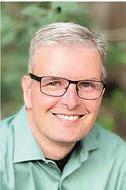
As a family, we seized this unique opportunity to learn new skills. We learned sign language, cooked amazing meals, played di erent instruments, and even tried watercolor painting.
My youngest daughter, Carly, an art major with a psychology minor and a creative perspective on life, taught us the basics of watercolor painting. On the day of our rst lesson, she handed out the supplies we needed and began by telling us to create a base of water over the area on our paper where we wanted to paint. As we created our water foundation, she explained that the base makes all the rest of the painting possible. With the base in place, she told us to take a tiny bit of paint and begin to create whatever we wanted to design.
For my rst piece, I wanted to paint a co ee cup with steam rising from the drink. I established my base, took my rst color, and brushed it onto the page. As I applied the paint, I was amazed that it actually began to resemble a cup. About 15 minutes into the lesson, Carly stopped me, gave me a quick compliment, and said, “To improve this, you need to add dimension and depth.”
She explained that to achieve this e ect, I needed to manipulate the paint that was already on the page. Following her advice, I lightly wet my brush and began to move the existing color, adding to some areas and reducing others. e result was a cup that had depth—something I could genuinely be proud of as a novice.
As I worked on this art project, I was struck by the wisdom of needing to start everything we do with a good base. e water on the page starts everything o right. In our lives the base is equally critical — faith, family, friends and many other things can be central to that base. Everyone’s base is di erent, but we all must have that foundation to be successful.
Beyond the base, I found the idea fascinating that all the color I needed was already present on the page. When I rst examined what I had on my paper, I thought Carly was mistaken; there was no way I had the necessary color. However, she was right. To create something with depth, I just needed to manipulate what was already there.
In our everyday lives, it’s easy to feel like we lack the things we need. In reality, while we may need to rear-


range “the colors,” everything we require is so often already available.
I encourage you to take some time to notice, re ect on and celebrate the areas of your life that are vibrant and full of color. When you look closely, you can nd those wonderful aspects of your life — whether it’s your relationships, family, friends, routines or cherished memories. All that vibrancy can be applied to the areas where you feel a struggle or where the color seems too faint.
Moving that color might involve asking for help or taking time for a conversation. It could also mean nding opportunities to assist others or trying something new. Whatever approach you choose, it can be as simple as adding a little water to your brush and blending those colors as needed.
e rich colors of your life make a di erence, but before you can move them, you need to see them.
You have got this.
I hope my words inspire you, and that you will share them with those who need encouragement. ank you to everyone who has shared their stories with me so far; I truly appreciate hearing about the valuable ideas you nd in these columns and how you use them to uplift those around you.
Jim Roome lives in Arvada with his wife, Beth. He spent 34 years in public education. Lessons learned from the one two punch of being diagnosed with MS shortly before his best friend was diagnosed with terminal cancer led him into a new pursuit as a freelance writer and speaker. He uses his life experiences and love of stories to inspire, educate and encourage local, national and international audiences. Contact him at jim.roome@gmail.com.







Check out the calendar of events!